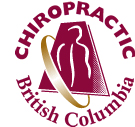FAQs
How long will it take for me to get well under adjustments?
The length of time will depend upon how long the vertebrae (spinal bones) have been displaced, how successful the adjustment is in reducing the displacement, how much damage has been done to the nerve tracts and fibers, how well you can retain the correction made by the adjustment, how many falls, jerks, or other injuries you will have during the service period, how well you cooperate with the doctor, your vitality, and the rate of response of the nerve fibers to the adjustment.
What brings about healing under adjustments?
The body has an inherent ability to heal itself if it is working normally under the control of a perfectly functioning nervous system. An example of this type of healing is the repair of a fractured bone after it has been set. The adjustment is to restore misplaced bone structures to their normal position, re-establish the normal pathways for the nerve tracts and fibers so that more perfect performance of the nervous system can take place, promoting healing.
How can the chiropractor determine if the patient is making progress?
Your progress is determined by the presence or absence of the objective and physical signs of the nervous system which include leg length checks, spastic contracture and spinal column distortion, comparison of the symptoms with the objective signs, and methods generally used by all doctors.
Why is an adjustment not given on the basis of how I feel?
If the correction made by the adjustment is still holding, the sensory nervous system many become overly sensitive, making you more aware of your distress. This is important to your recovery, and is usually quite temporary. Adjusting you on the basis of increased sensitivity, a reaction to your previous adjustment, will retard the progress. Adjustments are given only on the basis of lack of proper performance of the nervous system exhibited by leg length disparity, postural imbalance, and by x-ray measurement.
Does the chiropractor treat every case alike?
No two subluxations are identical therefore every adjustment is different. Because the chiropractor is “treating” imperfect performance of the nervous system, he applies his/her adjustment to the neck where the greatest neurological problem exists. The adjustment is tailored specifically to the patient.
Why am I adjusted in the neck when my pain is in my back and legs?
The neck (cervical) vertebrae, when interfering with the nervous system, causes problems throughout the body and the pain from a subluxation is most frequently expressed some distance from the location of the subluxation. The brain stem, located in the neck, controls the balance of the entire spine.
Why do I notice a difference in my body after the adjustment other than the reasons for which I originally consulted the chiropractor?
Many benefits accrue to the chiropractic patient other than those for which he/she sought chiropractic service. This is because more perfect performance of the nervous system results in the improvements in respiration, cardiac rate control, circulatory improvement, better functioning of the digestive tract, and better eliminatory action:
- Improved spinal balance through correction of the pelvis alignment.
- Realignment of the gravity centers of the body, causing better posture.
- Correction of spastic contracture in skeletal (body framework) muscles.
- Equalization of leg lengths providing better bodyweight distribution and protecting spinal discs.
- Improved position for internal organs.
Do I get an adjustment each visit?
No. If the nervous system is improving in its performance steadily, no adjustment should be given because it will create interference with that improvement.
If I get adjusted more frequently, will it speed up my recovery?
No, it may retard your recovery. Recovery is speeded up by the degree of correction obtained in the subluxation by the adjustment, by the care that the patient takes of their adjustment, by good living habits, by cooperation with the chiropractor, and by the length of time the adjustments hold.
Is it possible to feel fine yet have a subluxation interfering with my nervous system?
Yes, sensation of any kind is conveyed from the sense organs in the body to the spinal cord and brain over those nerves referred to as sensory. If the subluxation decreases the ability of these sensory nerves to convey messages to the central nervous system sufficiently, the patient may feel quite well yet be very ill. This is somewhat like certain drugs given to relieve symptoms and which act by lowering or blocking the sensory input to the central nervous system.
What care should I take of my adjustment?
Following an adjustment, the below precautions should be exercised to maintain the adjustment:
- Use care moving the head; avoid sudden movement.
- Avoid looking up when reaching above the head, raise eyes rather than the head.
- When lying down, do not use the head to lift or turn the body to another position.
- Do not permit anyone to massage the neck or to apply manipulation to the spine.
- Do not sleep on the stomach.
- Never put strain on the neck muscles.
- Have a spinal check-up following any fall, jar, or external force against the body
- Do not “pop” neck or pull on the head.
- Do not sleep while sitting in chairs, in automobiles, or on airplanes without proper support.
- Sit upright in chairs. Do not sit on the lower back (sacrum). Do not sit in chairs that place pressure against the back of the head, forcing it forwards.
- Avoid fatigue, get sufficient rest.
- Avoid emotional upsets.
- Check with your chiropractor if you have a cold, or a fever.
If I become subluxated again after holding my adjustment for a period of time, will the same symptoms return?
Yes, if the same subluxation recurs and to the same degree. The intensity of the symptoms corresponds rather closely with the severity of the subluxation. However, if the patient has held their adjustment for a considerable period of time, it will require time for the symptoms to recur. Just as it takes time to get well, it takes time to get sick. This is the reason you should check after any injury or trauma, not wait for symptoms to appear again.
Does it always require an injury to reproduce a subluxation?
No. Any stress of the body from either physical, emotional, chemical, or mental stress can cause you to reproduce the subluxation. We are subject to our environment and must continually adjust to it. Within that environment are disease-producing organisms, pollutants, poisons, and other irritants to which the body is subject and must adapt. If the body cannot adapt through the nervous system mechanisms, a subluxation can be produced. Stress from emotional upsets is also a common cause of the subluxation.
How can I tell if I need an adjustment?
The only sure way is to have your chiropractor check you for the measurable physical sign
What does it indicate if the physical signs change, such as the shortening of an opposite leg?
It indicates strongly and positively that a major change has taken place in the subluxation factors, and you should be re-x-rayed.
Can my subluxation correct itself?
Very rarely does this happen and only after an injury. Patients who suggest that this correction has occurred are judging by the symptoms. They feel better and believe that the reason for feeling better is that the subluxation has corrected itself. Frequently, an increase in the subluxation factors due to some injury will make the patient symptom free but only temporarily, later they will lbecome ill if an adjustment is not given. If the subluxation recurs slowly, the patient will feel exceptionally well for a day or two before the subluxation sets in.
Do vertebrae “snap” out of place?
Not unless there has been a rather severe injury. The vertebrae of the upper cervical spine (neck) have little to hold them, especially the atlas, which is held only by ligaments and muscles and must support the weight of the head. It is more vulnerable to injury than are the other vertebral segments.
After I have held my adjustment for a period of time, and suddenly require another what has happened if I have had no injury or no other reason is apparent?
The healing of the nerves and the remodeling of the spinal balance requires time. There is a tendency for the body to shift back to its old imbalanced position initially until lthe body stabilizes in its new and balanced posture. Periodic corrections/adjustments are required to maintain perfect balance and continue the healing process. The healing and shifting may take up to two or three years.
Do you recommend lifts in shoes to lengthen the shorter leg?
No. Shoe lifts cannot correct the subluxation and remove the spastic contracture, release the nerve fibers, detractionize the nerve tracts; nor can they bring about more perfect performance of the nervous system. In very rare cases does a heel lift assist to maintain structural balance following an adjustment.
Should everyone be checked for a subluxation?
Yes. Checking the nervous system’s performance to uncover conduction blocks, and removing them, could help prevent many conditions from developing. This care is beneficial for people of all ages.
Should I check my subluxation after recovery from my condition?
Yes, an occasional check is advisable, as health is a maintenance program. There is always the possibility of a recurrence of the subluxation, or of a new and different subluxation giving rise to a new condition with new symptoms. Further keeping a check on the functioning of the nervous system will help prevent many illnesses and help to maintain the body in an optimal state of wellness.
NOTE: In order to best monitor your condition, it is recommended that no one else treat your spinal condition while you are a patient of this office. In the event that another spinal health practitioner is consulted, additional x-rays may be required.
REGULAR OFFICE HOURS
Monday: 9AM - 5:30PM
Tuesday: 10AM - 6PM
Wednesday: 9AM - 5:30PM
Thursday: 10AM - 6PM
Closed Friday, Saturday and Sunday



